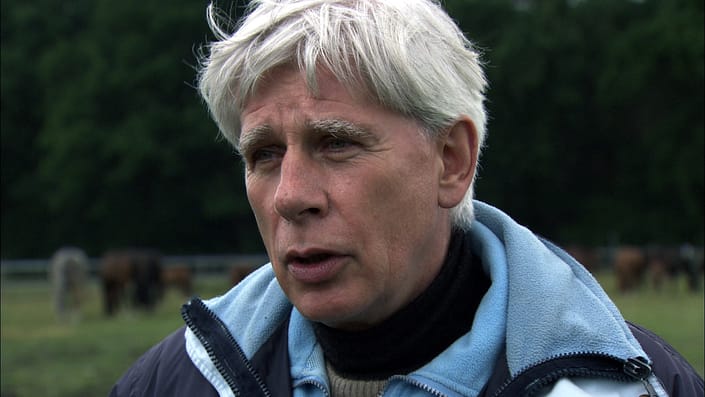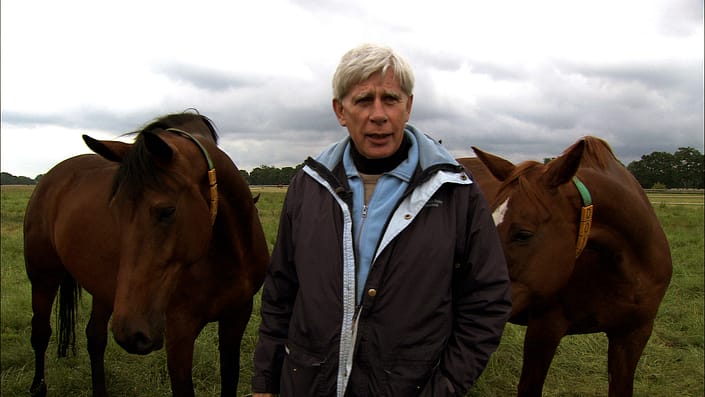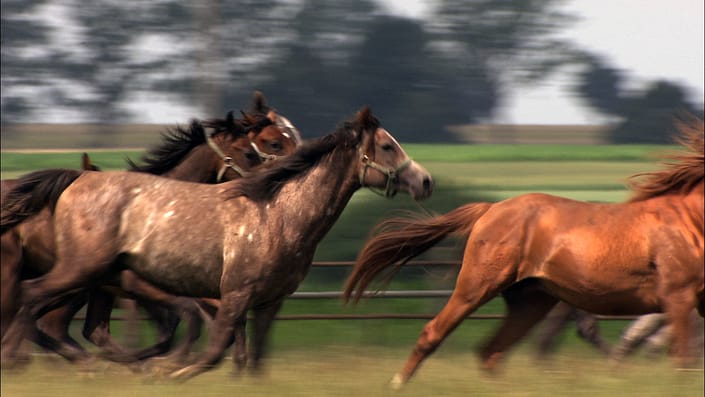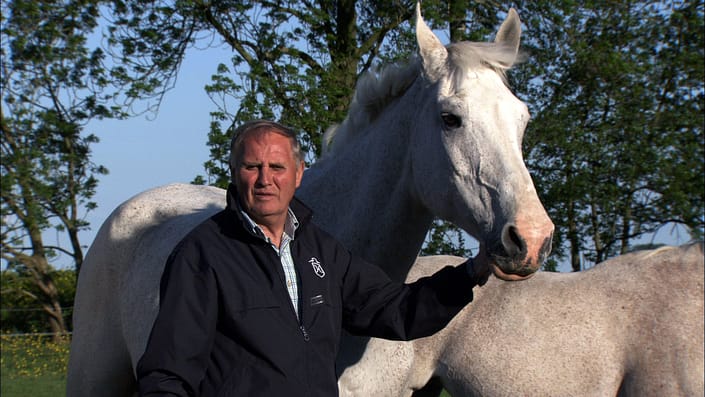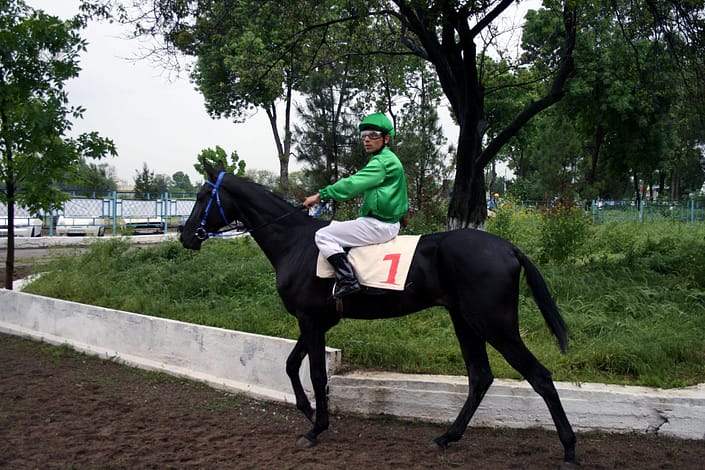Horseback riding has become one of the most popular sports in Europe and attracts millions of people. German horses dominate the international tourna- ments. At the Olympic Games in Hong Kong, 40% of the horses originally came from Germany and half of the show jumping horses from Holstein. This film looks into how Germany was able to become such a horse “superpower” and whether this position remains unchallenged. In doing so, the film also pursues some curious historical paradoxes. When the National Socialists overran and occupied Poland, for example, German equine specialists took over the nation’s state studs. Noble, half-breed horses for the military had traditionally been bred there using English and Arabian thoroughbreds, and the Germans learned from this.
One of them, Clemens Freiherr von Nagel, bought the Anglo-Arabian Ramzes from a Polish officer in 1948. The grey stallion revolutionised horse breeding in Germany and is one of the reasons behind the current dominant position of German high-performance horses. Since then, German breeders have crossbred more and/or less thoroughbred breeds into the existing warmblood lines. They combined the good qualities of different types and created a new type of German riding horse. The centuries-old preferred characteristics of a coach or plough horse have been crossbred with those of thoroughbred breeds to bring in speed, agility, alertness and intelligence, as well as courage and better reflexes. Today, breeders and equestrians from around the world come to Germany to try out horses and bid at auctions — and pay between fifty-thousand and one million euros. Some people fear that the best horse are being sold abroad; the 2009 World Equestrian Festival CHIO in Aachen, for example, revealed that the dominance of Germany is not only threatened but that other nations have caught up.
Noble Breed visits breeders and equestrians, veterinarians and the scientists, to unravel the secrets of successful breeding. The film looks back into history and also travels to the original sources of the noble breeds — Uzbekistan, for example. In addition to Germany, both Poland and Hungary play an important role in the film, for both these countries have been successfully crossbreeding thoroughbred lines for centuries.


